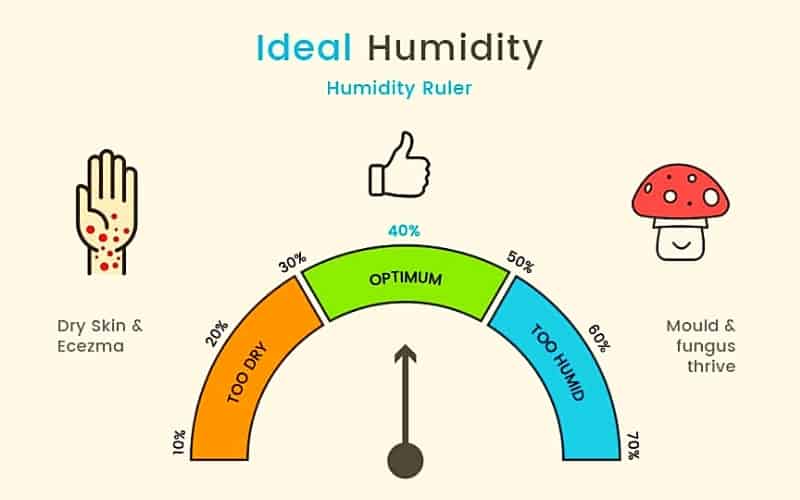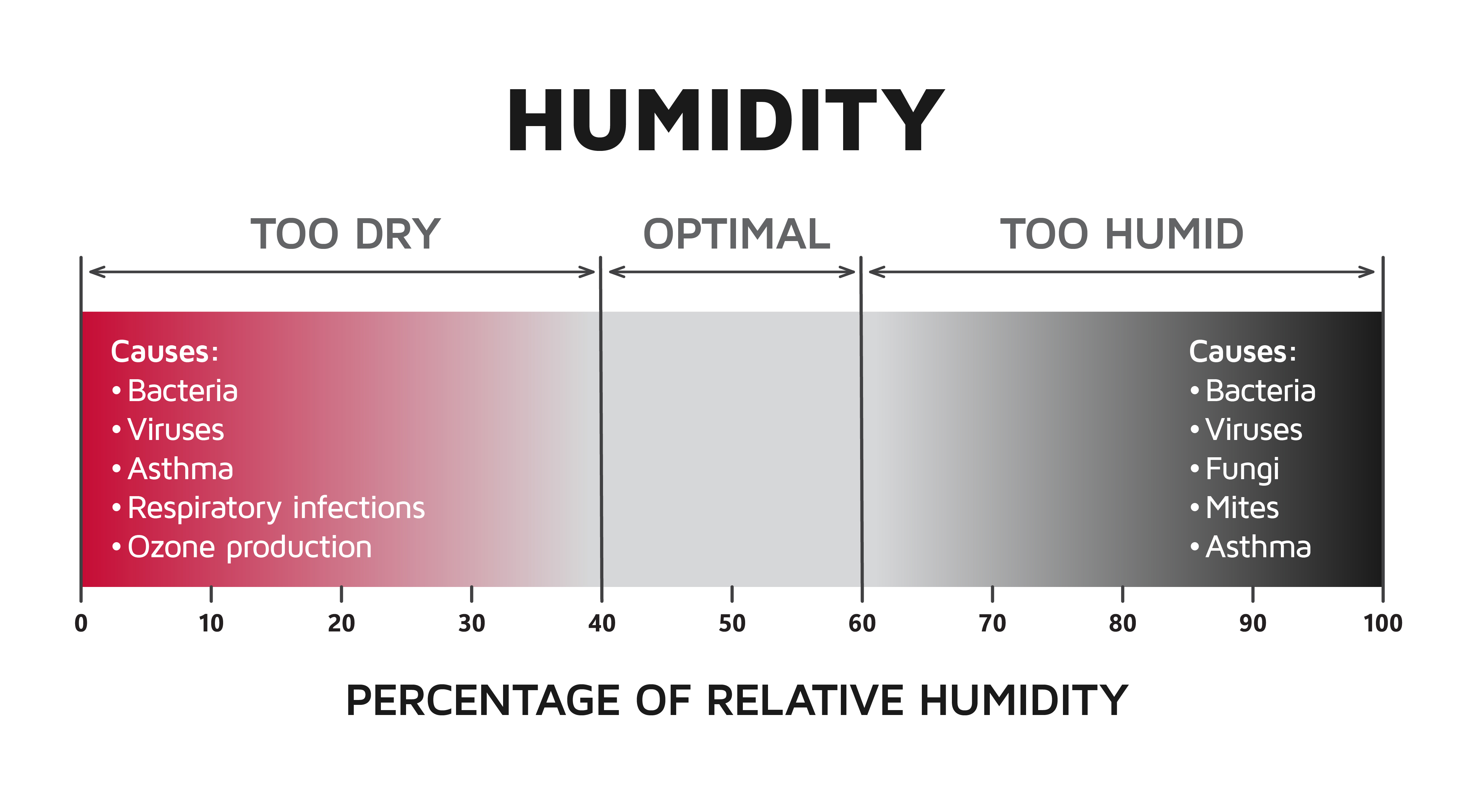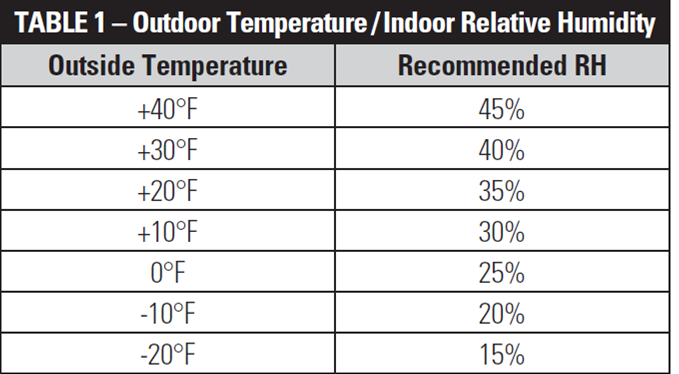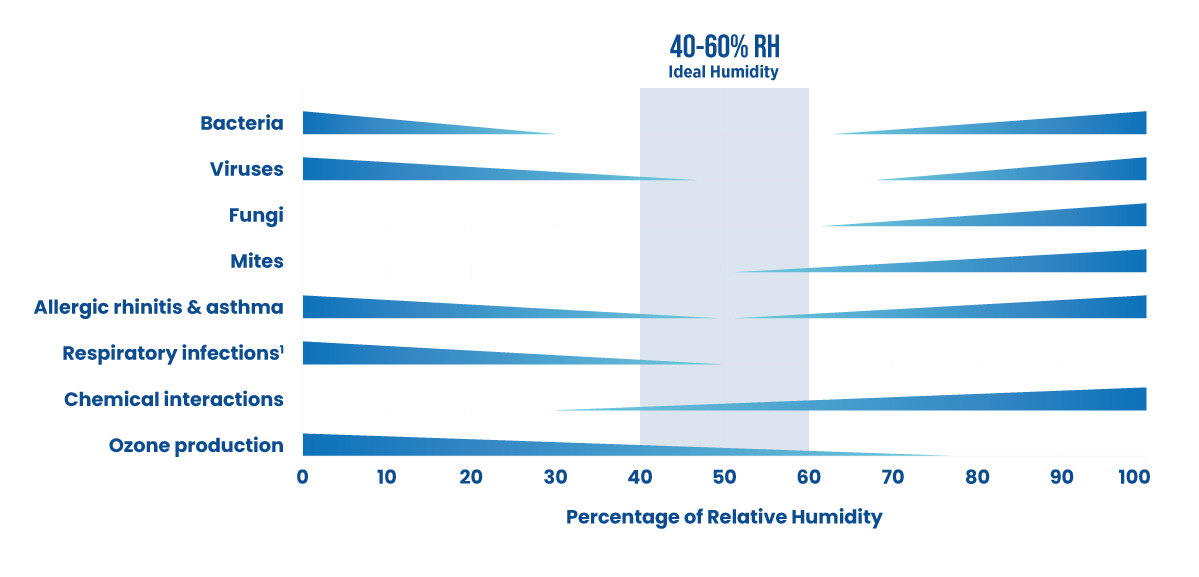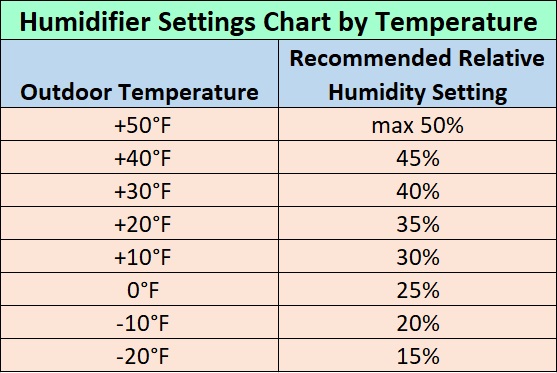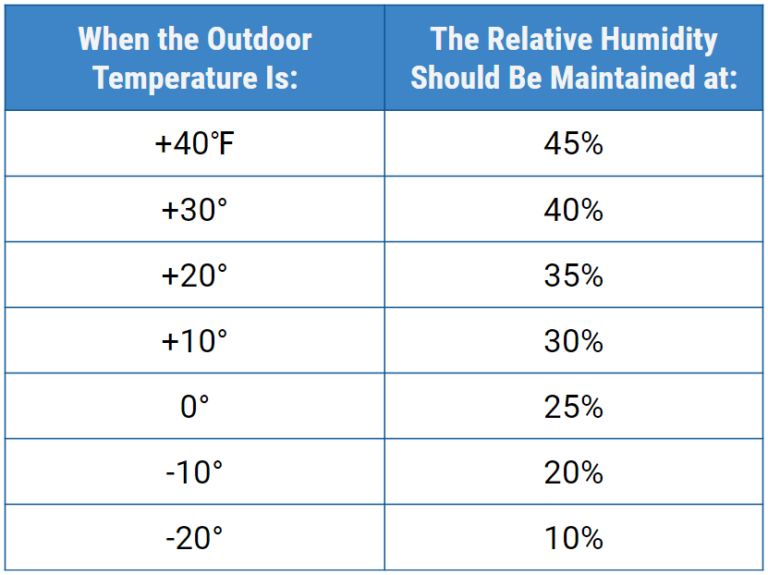What Percentage Should Humidity Be In House
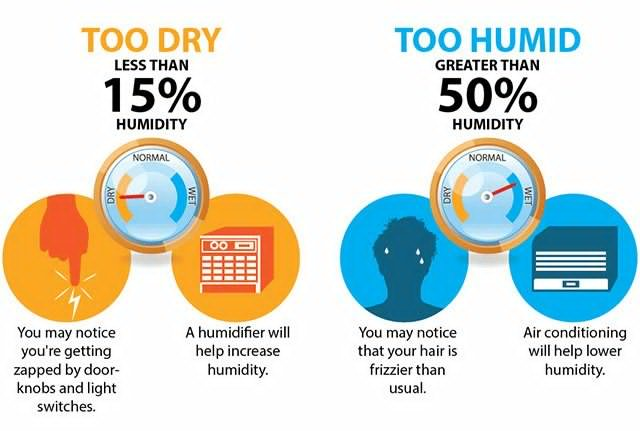
Maintaining optimal humidity levels in your home or building is crucial for comfort, health, and the longevity of your property. Too much or too little humidity can lead to a range of problems, from mold growth and structural damage to respiratory issues and discomfort. Understanding the ideal humidity percentage and how to achieve it is essential for homeowners, HVAC technicians, and facility managers alike.
The Goldilocks Zone: Ideal Humidity Levels
So, what percentage should humidity be in a house? The generally accepted range for indoor humidity is between 30% and 50%. During the summer months, aiming for the lower end of this range (30%-40%) is often preferable, while in the winter, slightly higher levels (40%-50%) can be more comfortable. It's important to note that these are general guidelines, and the ideal humidity level can vary slightly depending on individual preferences, geographic location, and the specific characteristics of the building.
The Environmental Protection Agency (EPA) specifically recommends keeping indoor humidity below 60% to prevent mold growth. Mold thrives in damp environments, so maintaining proper humidity levels is a key preventative measure.
Why Humidity Matters: Impacts on Health, Comfort, and Property
The level of humidity in your home directly impacts several factors:
- Health: High humidity can promote the growth of mold, mildew, and dust mites, all of which are common allergens. These allergens can trigger asthma, allergies, and other respiratory problems. Low humidity, on the other hand, can dry out your skin and mucous membranes, leading to irritation, nosebleeds, and increased susceptibility to colds and flu.
- Comfort: Humidity affects how we perceive temperature. High humidity makes the air feel hotter than it actually is because it inhibits the evaporation of sweat, which is our body's natural cooling mechanism. Low humidity can make the air feel dry and uncomfortable, leading to dry skin and scratchy throats.
- Property: High humidity can cause condensation on windows and walls, leading to water damage, wood rot, and mold growth. It can also damage sensitive electronics and other belongings. Low humidity can cause wood to shrink and crack, leading to damage to furniture, floors, and musical instruments.
Measuring Humidity: Tools and Techniques
Measuring indoor humidity is relatively simple. The most common tool for this purpose is a hygrometer, also sometimes called a humidity meter. These devices are readily available at most hardware stores and come in both analog and digital versions. Digital hygrometers are generally more accurate and easier to read.
To get an accurate reading, place the hygrometer in a central location away from direct sunlight, drafts, and sources of moisture, such as bathrooms and kitchens. Monitor the humidity levels regularly, especially during periods of extreme weather.
Controlling Humidity: Strategies for Different Seasons
Maintaining optimal humidity levels requires different strategies depending on the season:
Summer Humidity Control
During the summer months, high humidity is a common problem. Here are some ways to reduce humidity levels in your home:
- Air Conditioning: Your air conditioner is your primary weapon against high humidity. AC units not only cool the air but also remove moisture as part of the cooling process. Make sure your AC unit is properly sized for your home and that it's functioning efficiently. For example, an undersized AC unit will run constantly without adequately removing humidity, resulting in higher energy bills and a clammy environment.
- Dehumidifiers: In areas with particularly high humidity, a dehumidifier can be a valuable addition. These appliances draw air in, remove moisture, and then release the dry air back into the room. Choose a dehumidifier with a capacity that is appropriate for the size of the area you want to dehumidify.
- Proper Ventilation: Ensure that your home is properly ventilated by using exhaust fans in bathrooms and kitchens to remove moisture-laden air. Open windows when the weather permits to allow fresh air to circulate.
- Fix Leaks: Repair any leaks in your plumbing or roof to prevent excess moisture from entering your home.
Winter Humidity Control
During the winter months, the air can become excessively dry due to the use of heating systems. Here are some ways to increase humidity levels in your home:
- Humidifiers: Humidifiers add moisture to the air, alleviating the symptoms of dry air, such as dry skin, scratchy throats, and nosebleeds. There are several types of humidifiers available, including central humidifiers (which are integrated into your HVAC system), portable humidifiers (which are designed to humidify a single room), and evaporative coolers (which can provide both cooling and humidification).
- Ventilation Considerations: While ventilation is important year-round, be mindful of excessive ventilation during the winter months, as it can exacerbate dry air conditions.
- Simple Solutions: Simple solutions, such as placing bowls of water near radiators or allowing steam from showers to circulate through the house, can also help to increase humidity levels.
HVAC Systems and Humidity Control: A Closer Look
Your HVAC system plays a crucial role in controlling humidity levels in your home. Here's a closer look at how different HVAC components contribute to humidity management:
- Air Conditioners: As mentioned earlier, air conditioners remove moisture from the air as they cool it. However, it's important to ensure that your AC unit is properly sized for your home. An oversized AC unit may cool the air too quickly without adequately removing moisture, while an undersized unit may struggle to maintain a comfortable temperature and humidity level.
- Furnaces: Furnaces themselves don't directly control humidity. However, the type of furnace you have can indirectly impact humidity levels. For example, furnaces that burn fuel (such as natural gas or propane) can produce a small amount of moisture as a byproduct of combustion.
- Heat Pumps: Heat pumps can both heat and cool your home, making them a versatile option for humidity control. During the cooling season, heat pumps remove moisture from the air in the same way as air conditioners. During the heating season, they can sometimes contribute to dry air conditions, especially in colder climates.
- Ventilation Systems: Ventilation systems, such as energy recovery ventilators (ERVs) and heat recovery ventilators (HRVs), can help to improve indoor air quality by bringing in fresh air from outside. ERVs are particularly effective at maintaining humidity levels, as they transfer moisture between the incoming and outgoing air streams.
Working with HVAC Technicians: Troubleshooting Humidity Problems
If you're struggling to maintain optimal humidity levels in your home, it's a good idea to consult with a qualified HVAC technician. They can help you diagnose the problem and recommend appropriate solutions. Here are some common humidity-related issues that HVAC technicians can address:
- Improper AC Sizing: As mentioned earlier, an improperly sized AC unit can contribute to humidity problems. An HVAC technician can perform a load calculation to determine the correct size AC unit for your home.
- Ductwork Leaks: Leaky ductwork can allow conditioned air to escape, leading to higher humidity levels and increased energy bills. An HVAC technician can inspect your ductwork for leaks and seal them using duct sealant or tape.
- Refrigerant Leaks: Refrigerant leaks can reduce the efficiency of your AC unit, making it less effective at removing moisture from the air. An HVAC technician can locate and repair refrigerant leaks.
- Dirty Evaporator Coil: A dirty evaporator coil can reduce the airflow through your AC unit, making it less effective at cooling and dehumidifying the air. An HVAC technician can clean the evaporator coil to restore its performance.
Cost Considerations: Balancing Efficiency and Comfort
Investing in humidity control measures can have both upfront and ongoing costs. Here's a brief overview of some cost considerations:
- Dehumidifiers and Humidifiers: The cost of these appliances can range from a few hundred dollars for a portable unit to several thousand dollars for a whole-house system. Ongoing costs include electricity consumption and filter replacements.
- HVAC System Upgrades: Upgrading to a more efficient HVAC system can have a significant impact on humidity control and energy savings. However, the upfront cost can be substantial.
- Insulation and Sealing: Improving insulation and sealing air leaks can help to reduce humidity levels and lower energy bills. The cost of these improvements can vary depending on the extent of the work required.
Ultimately, the best approach to humidity control involves a combination of strategies tailored to your specific needs and budget. By understanding the importance of maintaining optimal humidity levels and working with qualified HVAC professionals, you can create a comfortable, healthy, and energy-efficient living environment.
For facility managers, a Building Management System (BMS) can automatically monitor and adjust humidity levels throughout a building, optimizing comfort and energy efficiency while minimizing the risk of mold growth and other humidity-related problems. Investing in a BMS is a strategic move to guarantee the longevity and health of large buildings.
Remember to always consult with licensed HVAC professionals for installations, repairs, and regular maintenance of your HVAC systems. Proper maintenance not only ensures optimal humidity control but also extends the lifespan of your equipment.